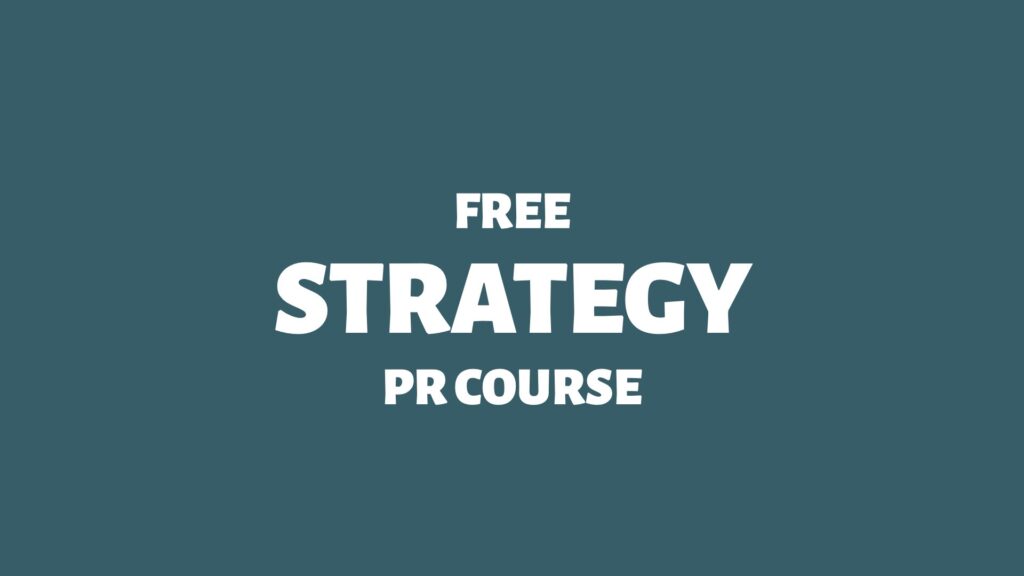I sometimes use the Hidden Arena PR Strategy.
On rare occasions, I put the Hidden Arena PR Strategy to good use. It’s not always a good fit, but mountains will be moved when it is.
You see, sometimes there are people just waiting to become activists. When your interests are aligned with theirs, all you have to do is to activate them. “Unleash” them upon the world, if you will.
The challenge is identifying such latent publics and, of course, finding a way to activate them.
Here goes:
The Activists
An activist is an individual or a group member actively seeking to promote, impede, or direct social, political, economic, or environmental change. They are driven by a firm conviction and dedication to a particular cause or set of issues, often arising from personal experiences or a desire to create a more just, equitable, and sustainable world. 1Activism. (2023, April 3). In Wikipedia. https://en.wikipedia.org/wiki/Activism
Activists employ various methods to raise awareness and advocate for their cause, including but not limited to protests, demonstrations, online campaigns, lobbying, and educational initiatives.
Activists aim to achieve diverse goals, depending on the specific cause they are passionate about. Typical objectives include shaping public opinion, influencing policy and legislation, mobilising resources, and fostering a sense of empowerment and solidarity among like-minded individuals.
They often strive to challenge existing social norms, structures, and systems that they perceive as unjust or harmful, aiming to bring about tangible change to improve the lives of those affected by the issues they champion.
Latent Activists
Typically, activists organise themselves in various ways to maximise their impact and reach. Some prefer to work independently, leveraging social media and other digital platforms to share their message. In contrast, others join or establish formal organisations, such as non-governmental organisations (NGOs), advocacy groups, or grassroots movements.
These groups may be structured hierarchically or operate on a more decentralised, consensus-based model. Networking and collaboration are vital components of activist organising. Individuals and groups often form alliances, coalitions, or partnerships to amplify their voices, pool resources, and coördinate actions to achieve shared objectives.
But these groups are all active activists. Not all people who feel strongly about a specific cause or issue have organised themselves.
These individuals may not be aware of how they can contribute or may be hesitant to take action due to personal or professional constraints. Identifying and mobilising latent activists can significantly bolster the strength and impact of a movement, as their untapped energy and passion can be channelled into productive efforts for change.
Activating Latent Activists
Creating opportunities for dialogue and education around the issues at hand is crucial in identifying latent activists.
Public forums, workshops, online discussions, and community events can serve as platforms for raising awareness and generating interest in the cause. Engaging with people through these channels can help unearth potential activists who may have been unaware of the depth of their passion or the avenues available for action.
Encouraging open discussions, sharing personal stories, and emphasising the importance of individual contributions can inspire these individuals to leap from passive supporters to active participants.
Once potential activists have been identified, it is essential to “activate” them with the resources, guidance, and support needed to translate their passion into meaningful action.
Offering training on effective communication, organising, and advocacy techniques can equip latent activists with the skills necessary to make a difference.
The Hidden Arena (“Activist Backend”)
Connecting latent activists with established networks, mentorship programs, and volunteer opportunities can facilitate their growth and involvement in the movement. By nurturing latent activists and helping them find their footing, organisations and movements can harness the power of a larger, more diverse, committed group of advocates working together to achieve shared objectives.
One way to facilitate this type of nurturing is to establish an “invite-only” arena for latent activists to get together. No matter if this arena is a private Facebook group or a privately hosted web forum, it’s essential that these latent activists feel safe to explore arguments, exchange information, and discuss strategies and activities.
The first step in creating this “hidden arena” is to carefully select and vet its members, ensuring they share the same core values and objectives as the broader movement. This may involve a combination of personal invitations, referrals from trusted sources, and thorough screening processes to maintain a safe and supportive environment for all participants.
By fostering a sense of exclusivity and trust, the group can become a haven for open, honest dialogue and collaborative problem-solving.
Pooling Resources for the Hidden Arena
Recognising and celebrating the successes and milestones achieved within the hidden arena is important. By highlighting the accomplishments of its members and showcasing the impact of their collective efforts, the group can foster a sense of pride, motivation, and purpose. This reinforces the collaborative space’s value and encourages its members’ ongoing engagement and commitment.
In addition to providing a secure space for discussions, it is crucial to offer resources and tools that enable effective communication and collaboration. This may include secure messaging platforms, file-sharing systems, and project management tools to protect sensitive information and facilitate coördinated action.
Regular online meetings, webinars, or workshops can also be organised to foster community and camaraderie among members and provide opportunities for skill-building and leadership development.
As the group evolves, it is essential to continually assess its effectiveness and adapt its strategies to ensure that it remains a valuable resource for nurturing and empowering latent activists in their pursuit of meaningful change.
Common Hidden Arena Mistakes
Since I’ve used the Hidden Arena PR Strategy quite a few times, you can learn from some of my (many) mistakes:

Thanks for reading. Please consider sharing my public relations blog with other communication and marketing professionals. If you have questions (or want to retain my PR services), please contact me at jerry@spinfactory.com.
PR Resource: Reading List
della Porta, D., & Diani, M. (2006). Social Movements: An Introduction (2nd ed.). Malden, MA: Blackwell Publishing.
Earl, J., & Kimport, K. (2011). Digitally Enabled Social Change: Activism in the Internet Age. Cambridge, MA: MIT Press.
Tarrow, S. G. (2011). Power in Movement: Social Movements and Contentious Politics (3rd ed.). Cambridge, UK: Cambridge University Press.
PR Resource: More PR Strategies

Spin Academy | Online PR Courses
Doctor Spin’s PR School: Free Strategy PR Course
Unlock the power of strategic public relations with this free Strategy PR Course. Elevate your skills and boost your career today.
Public Relations Strategies
“The underlying principles of strategy are enduring, regardless of technology or the pace of change.”
— Michael Porter
Learn more: All Free PR Courses
💡 Subscribe and get a free ebook on how to get better PR ideas.
PR Resource: The Magical PR Strategy Question

Spin Academy | Online PR Courses
The Magical PR Strategy Question
Your PR strategy should answer one simple question:
Whenever your PR strategy fails to answer this question, it also fails to provide a roadmap to success.
“Competitiveness is derived from permanent infrastructural characteristics of organizational design, rather than just relying on temporary strategic assets.”
Source: Strategic Change 2Connor, T. (2007). A consideration of strategic assets and the organizational sources of competitiveness. Strategic Change, 16, 127 – 136. https://doi.org/10.1002/JSC.789
Learn more: The Magical PR Strategy Question
💡 Subscribe and get a free ebook on how to get better PR ideas.
PR Resource: The 1‑Page Strategy
“If you can’t explain it simply, you don’t understand it well enough.”
— Albert Einstein
Spin Academy | Online PR Courses
How to Write a 1‑Page PR Strategy
My inspiration for writing “no-bullshit” strategies comes from the classic “Good Strategy, Bad Strategy: The Difference and Why It Matters” by Richard Rumelt. The 1‑Page PR Strategy focuses on how to win. 3Rumelt, R. P. (2011). Good Strategy, Bad Strategy: The Difference and Why It Matters. Crown Business.
“The most basic idea of strategy is the application of strength against weakness. Or, if you prefer, strength applied to the most promising opportunity.”
Source: Good Strategy, Bad Strategy: The Difference and Why It Matters 4Rumelt, R. P. (2011). Good Strategy, Bad Strategy: The Difference and Why It Matters. Crown Business.
Here’s how you can write a 1‑Page PR Strategy that fits one page — using the mythical battle between David and Goliath as an analogy:
1. Analysis
2. Guiding Principle
3. Coherent Actions
If you write 1 – 2 clear sentences per bullet, your strategy should fit nicely on one page.
Read also: The Easy Street PR Strategy: Keep It Simple To Win
💡 Subscribe and get a free ebook on how to get better PR ideas.
ANNOTATIONS
| 1 | Activism. (2023, April 3). In Wikipedia. https://en.wikipedia.org/wiki/Activism |
|---|---|
| 2 | Connor, T. (2007). A consideration of strategic assets and the organizational sources of competitiveness. Strategic Change, 16, 127 – 136. https://doi.org/10.1002/JSC.789 |
| 3, 4 | Rumelt, R. P. (2011). Good Strategy, Bad Strategy: The Difference and Why It Matters. Crown Business. |
























